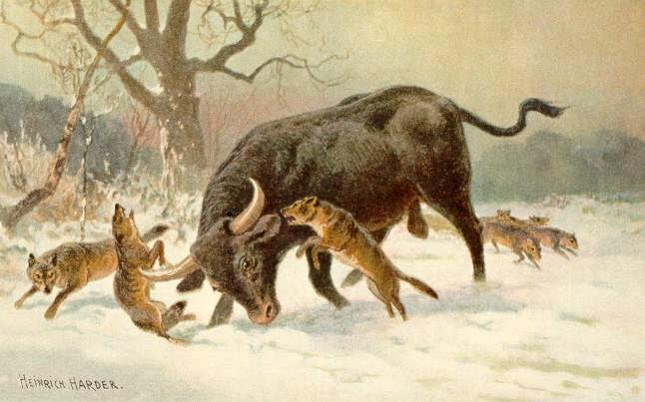
Researchers around the world are planning to do something very unusual -- working towards resurrecting ancient aurochs with the help of a genetic manipulation process called back-breeding. The extinct large wild cattle inhabited Europe, Asia, and North Africa.
Also Read: NASA's Curiosity Rover discovers purple rocks on Mars!
In back-breeding, a type of artificial selection is made by intentional selective breeding of domestic animal in order to get an extinct animal breed, which is generally similar to a wild-type ancestor.
The researchers would back-breed cattle which still possess the DNA of aurochs. This beast was found in Europe where it existed for thousands of years and turned extinct in the 1600s. Researchers are trying to get the species back to existence so it could play a vital role in the European ecology.

The researchers have been carrying forward various projects since 2009 and are now very close to get this ancient species to life.
In Hungary, 300 calves have been back-bred under a scheme named Operation Taurus.
"I don't think we'll ever be able to create an animal that is 100 percent like the aurochs, but we can get very close," Italian scientist Professor Donato Matassino was quoted as saying by the Telegraph.
Portugal is another country which is cross-breeding to remake young proto-aurochs under the the Taurus Project. The Faia Brava Reserve aims at restoring Portugal's local ecology while introducing a safari-like camp which would "rewild" Europe and make people experience the wild life that prevailed 5,000 years ago.
"Wild cattle are one of the species that shaped the European landscape over hundreds of thousands of years," said Wouter Helmer, the founder of Rewilding Europe, pressreader.com reported.
"If there are no large herbivores then the forest regenerates very fast. Big grazing animals keep patches of land open and create variety in the landscape which helps many thousands of species of plants, insects and animals," Hemler added.
The cave paintings portray that the ancient and extinct species of aurochs were a crucial part of the ancient European culture.
The researchers fear being opposed by people for recreating aurochs as they can weigh thousands of kilos and stand 7ft tall, IBT UK reported.
But the supporters of this research believe that reviving this giant species will help the environment and also endorse local tourism.















